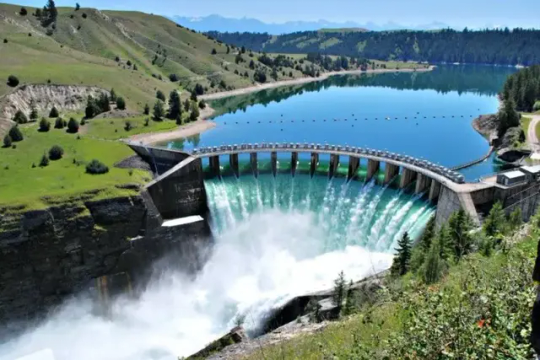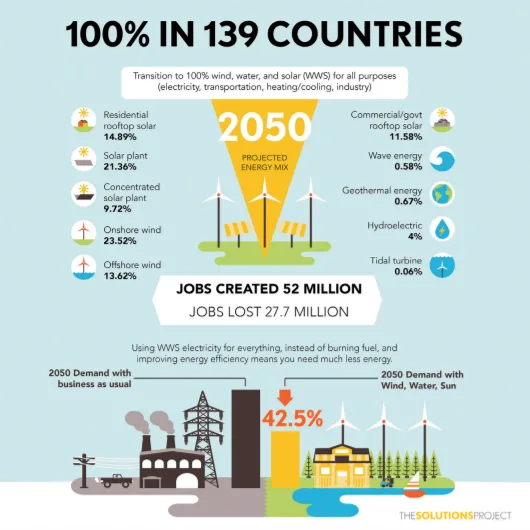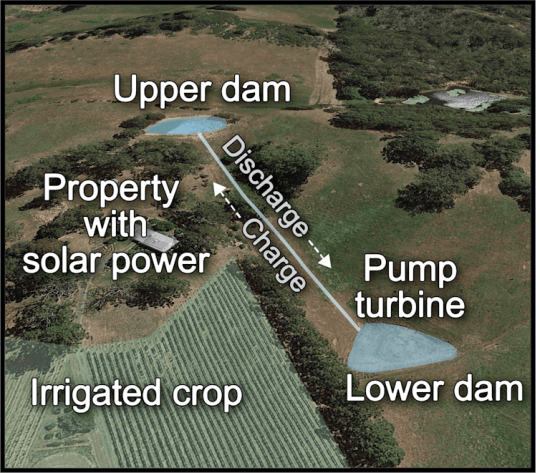#hydropowered
Explore tagged Tumblr posts
Text

A noria, hydropowered scoop, but with camel in North Africa
French vintage postcard
#tarjeta#north africa#postkaart#noria#sepia#camel#north#africa#historic#photo#postal#briefkaart#scoop#photography#vintage#ephemera#ansichtskarte#old#postcard#french#postkarte#carte postale#card#hydropowered
4 notes
·
View notes
Text
Countries That Generate 100% Renewable Energy Electricity

Pictured: Hydropower is the most widely used source of renewable energy-generated electricity. This dam is located near Polson, Montana.
Is 100% Renewable Resource-Generated Electricity Possible?
"With concerns growing regarding burning fossil fuels and their connection to global warming, a great debate is occurring regarding the feasibility of producing electricity entirely from non-carbon emitting green renewable energy sources such as geothermal, hydroelectric, wind, and solar. Skeptics and naysayers claim that achieving such a goal is impractical, would destroy the economy, and is in the realm of pie-in-the-sky thinking.
But is it actually impractical and unattainable? The answer is clearly "no" since there are already several countries that generate 100% of the electricity they use from renewable sources of energy. There are also many other countries that obtain over 90% of the electricity they use from renewable energy sources. Despite the negative rhetoric by some, there’s nothing impractical about using renewable energy to generate electricity on a grand scale.
The Countries Leading the Way to a 100% Renewable Energy Electricity Future
The following is a list of countries that are leading the world into the new frontier of economies that run their electrical grids either entirely or nearly entirely on renewable energy per a 2018 report by the International Renewable Energy Association (IREA) and the U.S. Energy Information Administration (EIA) statistics. This list and the percentages are subject to change over time, but it provides a good snapshot of just how practical renewable energy currently is for electricity generation.
Iceland obtains 100% of the electricity it needs from renewable energy sources. Iceland is somewhat unique since volcanic activity on the island provides a significant geothermal energy source that is utilized to provide approximately one-quarter of the country’s electricity. The remaining three quarters are provided by hydro-power.
Paraguay obtains 100% of the electricity it uses from renewable sources. Huge hydropower dams provide all of Paraguay's electricity needs, as well as supply neighboring Argentina and Brazil with electricity.
Costa Rica is another country leading the way towards 100% renewable-produced electricity. During 2018, Costa Rica met all of its electricity needs using renewable energy sources such as hydro-power, geothermal, biomass, wind, and solar for 300 days in a row.
Ethiopia, Kenya, Namibia, Norway, Tajikistan, and Uruguay are countries currently generating greater than 90% of the electricity they use from renewable energy sources. Some of these countries are working towards running their electric networks entirely from renewable energy.
Some things stand out from the list of countries leading the way in electricity generated from renewable energy.
They are relatively small countries.
They have abundant renewable natural resources, particularly abundant water resources available to generate hydro-power.
The list includes both wealthy developed and poor developing countries.
The fact that both developed wealthy countries and poor developing countries are leaders in renewable energy-produced electricity indicates that the cost of constructing renewable energy resources is not a limiting factor. In fact, developing countries can justify the capital cost of building renewable energy sources of electricity due to the fact that the operating costs are relatively low and predictable (not subject to commodity price swings), and renewable energy allows a country to be self-sufficient in meeting its electricity needs.
Large Developed Countries Can Also Produce 100% Of Their Electricity From Renewable Energy
Critics and naysayers might say that while these achievements by small countries are impressive, implementing renewable energy on a large scale is impractical for larger developed countries. But is it really impractical?
Cost and technological barriers are not what they once were for renewable energy. In fact, costs for renewable energy continue to decline year after year, and renewable energy technologies continue to develop and become more efficient. Many countries have not even come close to tapping their renewable energy potential or even tried some of the technologies available, such as electricity generated by wave or tidal power. Additionally, the argument that renewable energy is only useful when it is being generated is becoming irrelevant since large utility-scale batteries are now available that have the capability to store electricity generated by renewable energy and allow it to be used when needed.
Clearly, the answer is yes. Large developed countries can produce 100% of the electricity they need from renewable sources. It is only a matter of the will and investment at this point to make the changeover from fossil fuel-generated electricity to renewable energy electricity generation. The technical barriers are not as great as naysayers claim, as proven by smaller countries that have already reached the 100% threshold. Moving towards 100% renewable energy sources of electricity will become easier over time as wind, solar, and other renewables become more efficient and large utility-scale battery storage technologies become capable of storing larger quantities of energy for use when needed.

Pictured: Researchers lay out a plan for nearly 140 countries that could be powered 100 percent by renewable energy by 2050. spectrum.ieee.org
The City of Los Angeles Leads the Way in the U.S. With Inexpensive Solar
Various forms of renewable energy have experienced significant cost reductions to a point at which they are competitive and, in some cases, cheaper than traditional electrical energy sources such as coal, oil, and natural gas. This cost reduction trend will accelerate the change over to renewable sources of electricity. For example, the City of Los Angeles signed a deal in July 2019 for a large solar electricity array that will provide 7% of the city's electricity by 2025 at only two cents per kilowatt-hour (kWh). This is far cheaper than fossil fuel-derived electricity.
In addition to being cost-competitive, the practicality and reliability of renewable energy are poised to make major advances as large utility-scale battery technologies are rolled out that can be used to capture renewable energy when it is created, so the electricity can be used at a later time when needed. The Los Angeles solar array project includes utility-scale battery backup at a cost of 1.3 cents per kWh, so the electricity generated by the sun will be available even when the sun is not shining.
Los Angeles has a goal of achieving 100% renewable electricity generation by 2050. This solar contract is a big step toward achieving their goal."
-via TurboFuture, February 21, 2023
#renewables#renewablefuture#renewable energy#clean energy#green energy#solar power#solar panels#fossil fuels#climate crisis#climate change#global warming#hydropower#geothermal#wind power#wind turbines#iceland#paraguay#costa rica#ethiopia#kenya#namibia#norway#tajikistan#uruguay#united states#los angeles#battery#hope posting#hopepunk#sustainability
323 notes
·
View notes
Text
27 notes
·
View notes
Text
For farmers, there’s now another option: connect one of your dams to a river – or link two dams together – to create a small pumped hydro plant to store electricity from solar to use at night. The water in your dams could offer yet another form of self-reliance.
Our new research has identified over 30,000 rural sites where micro pumped hydro could work. A typical site could produce two kilowatts of power and store 30 kilowatt hours of energy – enough to run a typical home in South Australia for 40 hours.

#solarpunk#solar punk#solarpower#hydropower#renewable energy#self reliant farms#australia#engineering
22 notes
·
View notes
Text

Smol sigiwinne
#sigewinne#art#artists on tumblr#illustration#painting#myart#artwork#girl#my art#doodle#anime#hewaje#bunny#bunny girl#genshin impact#genshin fanart#genshin sigewinne#hydropower
28 notes
·
View notes
Text

I love kaito water
Artwork by: kurochimi
#kaito vocaloid#vocaloid fanart#vocaloid#water drops#drink water#hydrogen#hydropower#i love water#water is life#water is wet#kaito water#glug glug glug#water
20 notes
·
View notes
Text


Tom Johnston, one of Scotland’s best known Secretaries of State, was born on November 2nd 1881.
Now and again I bend the rules and cover a politician in my posts, Tom Johnston is such a case, a remarkable man who lived to see the Highlands transformed, bringing electricity to regions who had, until then had very little or none in the years up to Woerld War Two,
Johnston was the son of David Johnston, a grocer, and his wife, Mary Blackwood, he was born in Kirkintilloch in and educated at Lairdsland Public School then at Lenzie Academy.
Tom then entered the University Glasgow where he became interested in politics and stood successfully for a local election in 1903 representing the Independent Labour Party.
In 1906, thanks to inheriting a printing press from a relative, he was able to set up The Forward, a radical weekly paper that reflected his Fabianism and teetotalism. He remained editor until 1933. It was in the early days of running the paper that he matriculated at the University as a mature student aged twenty-three.
In 1907 he continued his education and took a class in Moral Philosophy and gave his address as the Student Settlement, a pioneering student association interested in social improvement. The following year he enrolled for Economics, but he left without graduating.
He married Margaret F. Cochrane in 1914 and they were married for over 50 years, they had two children.
During the The First World War he advocated peace and attacked war profiteers. After the war he stood for parliament, and in 1922 won West Stirlingshire for Labour. The period of his greatest achievement was during the Second World War. Churchill appointed him as secretary of state for Scotland in 1941. He worked with colleagues of all parties to galvanise the Scottish economy on a war footing.
It was Tom Johnston who was instrumental in creating the North of Scotland Hydro- Electric Board, his greatest achievement, handling rural Scotland's resistance and hesitation towards the project intelligently. Until the 1940s, many rural areas of Scotland outwith the Central Belt had little or no electricity supply. There were coal-fired steam-turbine and some diesel-driven power stations serving urban locations.
In the three decades following the Second World War, the Hydro Board's teams of planners, engineers, architects and labourers succeeded in creating an epic succession of electricity generation and distribution schemes that were world-renowned not only for successfully achieving their technical aims in very demanding terrain but for often doing so in an aesthetically inspiring manner. The economic and social benefits thus brought to all the people of Scotland, and especially those in rural areas, were immense and long-lasting
In 1920 he published the History of the Working Classes in Scotland and from 1950 to 1952 he served as President of the Scottish History Society.
The University of Glasgow conferred the degree of Honorary LLD in 1945. In 1948 he was awarded the Freedom of the City of Aberdeen. He was also Chancellor of Aberdeen University from 1951 until his death.
Thomas Johnston died on 5th September 1965 in Milgavie.
18 notes
·
View notes
Text
Excerpt from this story from the New York Times:
Global pollution from electricity generation was set to fall last year, thanks to the growth of renewable energy. Then came the droughts.
Hydropower, the biggest source of renewable energy in the world, was crippled by lack of rain in several countries last year, driving up emissions as countries turned to fossil fuels to fill the gap. To cope with the electricity shortfall, China and India turned to coal plants, and Colombia to natural gas.
A recent report by the International Energy Agency showed that hydropower’s decline last year pushed countries to use dirtier sources of energy that produced an extra 170 million metric tons of carbon dioxide. That’s like turning on an extra 42 coal-fired power plants for a year. In China, the worst-hit country, hydroelectricity generation saw the steepest fall in the past two decades, according to the I.E.A.
This year, the dip in hydropower has continued in some countries, including Ecuador and Turkey, as temperatures continue to shatter records. Because its giant hydroelectric dams didn’t have enough water, Canada imported more electricity from the United States than it had done in over a decade, as my colleague Ivan Penn wrote this week.
In the United States, hydropower generation fell 6 percent last year. The decline was mostly attributed to high temperatures having melted snow too quickly in the Northwest, leading to huge water loss that curbed energy production in hydropower plants.
In China, hydropower generation fell around 4.9 percent last year, according to the I.E.A., because of a severe drought in the southwest provinces of Sichuan and Yunnan, which can generate almost half of the country’s hydroelectricity. Still, renewables have grown so much in China that there is reason to believe that the country’s emissions may have peaked last year, as Carbon Brief reported.
Climate change doesn’t lead to drier conditions everywhere. In some parts of the world, it increases rain. In Brazil, lack of rain has dried up large dams that fuel power plants in the north, while frightening floods have come to the south, where there are even larger dams.
While climate change is still expected to present enormous challenges for hydropower in Brazil, rain in one part of the country can help offset drought in another. But that can happen only because Brazil’s grid is fully interconnected, meaning that the energy that each plant produces can be directed to almost any part of the country that needs it.
Experts say a better connected electric system in the United States and Canada would help the region cope with hydropower declines. Instead of one fully interconnected grid, the United States has three grids that connect only in a few points and share little power between them, as my colleagues Nadja Popovich and Brad Plumer explained.
“Most models suggest that a more interconnected grid is a better grid,” Shelley Welton, a professor at the University of Pennsylvania who helped write a recent report on the United States’ grid, told Penn. “I do think there is power in being interconnected across North America. We need scenario planning. We need long-term planning.”
7 notes
·
View notes
Text
Btw we cannot realistically meet the energy demands of modern life without using nuclear energy if we want to stop using fossil fuels. And a lot of supposedly green energy sources result in serious problems for the environment (especially solar and hydro) 👍
6 notes
·
View notes
Text



soviet mosaic style illustration
https://www.instagram.com/ulianapanovaa
2 notes
·
View notes
Text
I don’t know how far this will reach, but I am looking to interview people who live in Brazil for a class project based around economics and the environment. I am looking to ask about questions based around hydropower and taxes based on times of drought. If you are someone who has lived in Brazil and paid taxes on electricity and water utilities, please reach out to me! I tried contacting family members who live in Brazil, but they have unfortunately not gotten back to me.
3 notes
·
View notes
Text

Hydropower plant of Refrain, Franche-Comté region of eastern France
French vintage postcard
#briefkaart#photography#vintage#tarjeta#postkaart#french#refrain#postal#photo#postcard#historic#carte postale#ephemera#hydropower#sepia#france#plant#ansichtskarte#postkarte
3 notes
·
View notes
Text

Dr Yohannes Yihdego
https://latrobe.academia.edu/YohannesYihdegoWoldeyohannes
https://twitter.com/Yohannesyihdego
#nature#engineering#geology#book blog#geolocation#hydrology#hydropower#research#my hero academia#university#education#educate yourself#educators#teachersupdates#student#graduation#graduate school#graduatejobs#college graduate#graduate studies#job hunting#new job#job interview#jobs#jobseekers#jobsearch#online jobs#job opportunities#employees#employment
4 notes
·
View notes
Text
19 notes
·
View notes
Text
#tech#TechnologyAI for sustainability#circular economy#electric vehicles#geothermal energy#green buildings#hydropower#Innovative technologies#Internet of Things#precision farming#renewable energy sources#smart grids#solar power#sustainable future#sustainable materials#sustainable transportation#vertical farming#wind energy
2 notes
·
View notes
Text

The prophecy realized
#furina#artists on tumblr#art#illustration#painting#myart#artwork#ocean#deep sea#ocean view#girl underwater#my art#girl#doodle#anime#film scenes#genshin impact#hydropower#prophecy
35 notes
·
View notes